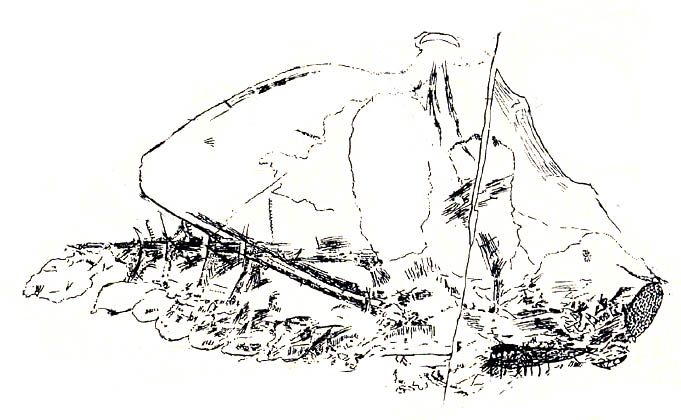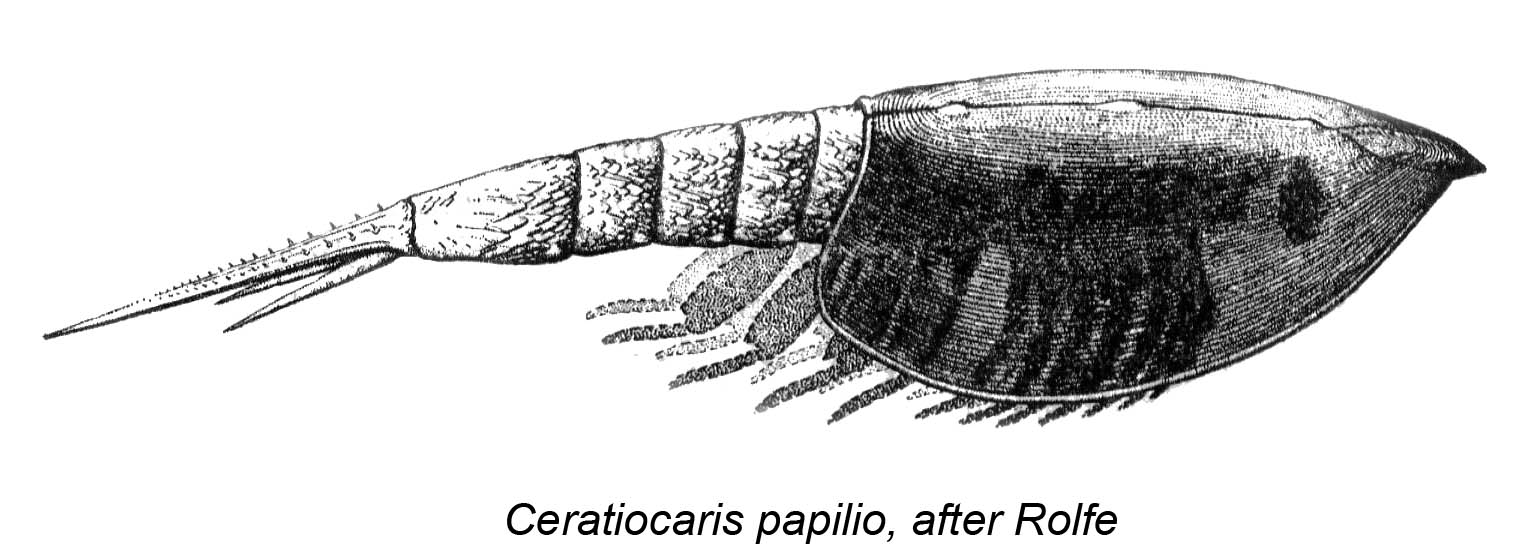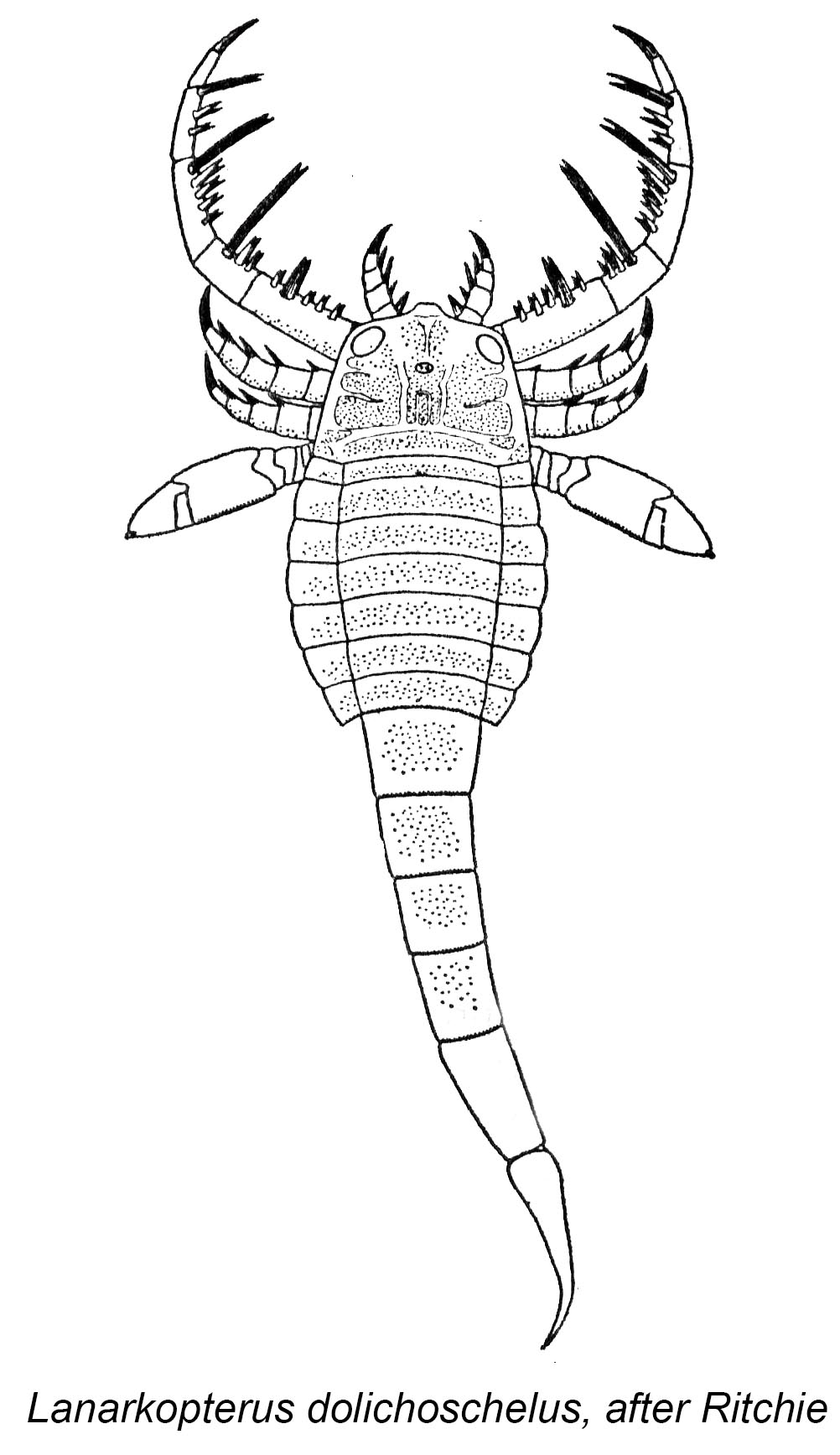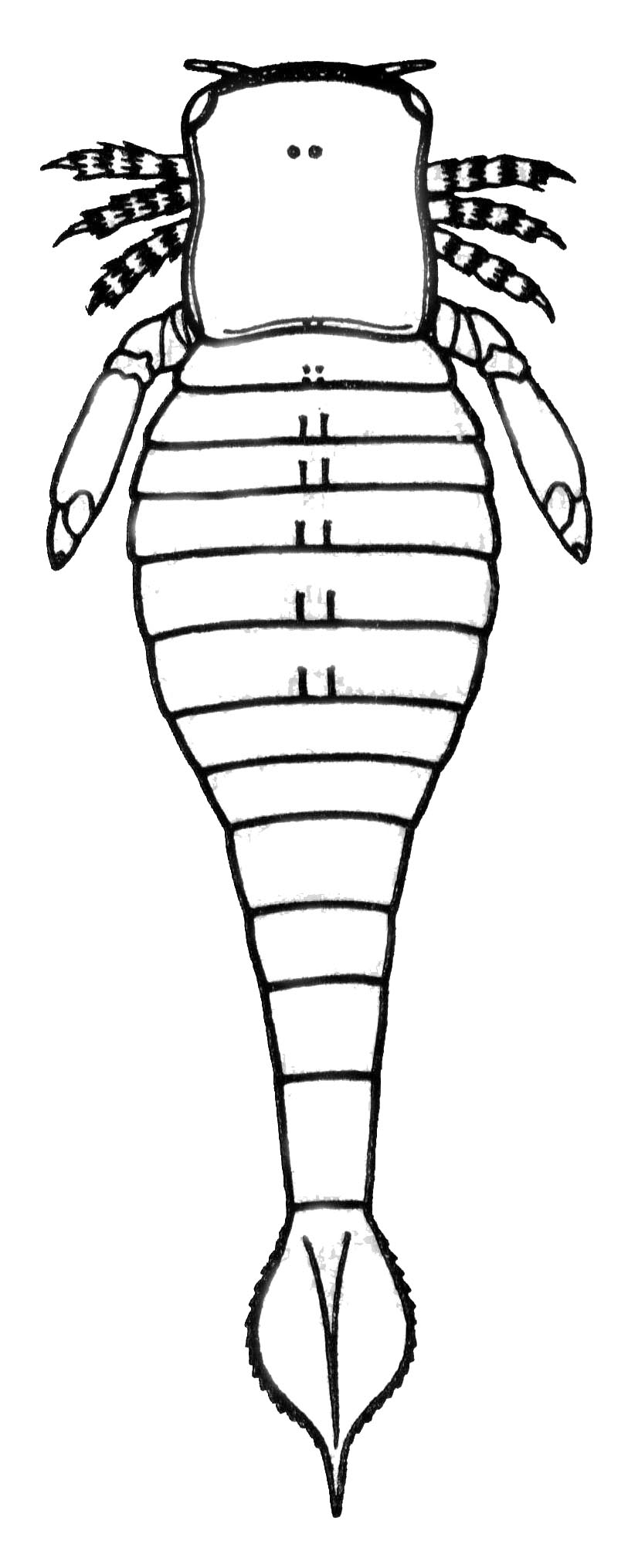Ainiktozoon loganense Scourfield, 1937

This enigmatic creature has been described in an extensive paper by Alex Ritchie (1985). We treated Ainiktozoon fossils contained within a concretion with acetic acid and also thin sectioned them. This revealed incredibly well-preserved soft tissues, such as 3D muscles showing even the sarcomeres. Together with David Martill and Fred Schram we found out that Ainiktozoon was previously reconstructed upside-down and that it is was not a proto-chordate, but in fact a predatory arthropod. Despite this, much of the anatomy of this arthropod remains poorly understood, but further work is not possible due to the closure of the single site in Scotland where it occurs.
Ceratiocaris papilio Salter & Murchison, 1859

Ceratiocaris papilio is a pod shrimp and the most abundant macrofossil at the fossil site Birk Knowes SSSI. It occurs throughout the Patrick Burn Formation in great amounts, but at Birk Knowes its preservation is exceptional. The (seemingly) only specimens with appendages are from this locality, one of which can be seen below. Though much work on this pod shrimp was done by Ian Rolfe (1963), there are still a few questions to be solved.
Lanarkopterus dolichoschelus Peach and Horne, 1899
Lanarkopterus dolichoschelus occurs at outcrops of the Fish Bed Formation. It is the only mixopterid known from the Silurian of the South of Scotland. Specimens, even fragmentary, are uncommon occurrences. The specimens found indicate a size range from approximately 8cm to 60cm.

Slimonia acuminata Salter, 1856

Slimonia acuminata is by far the largest eurypterid from the Silurian inlier of the south of Scotland. It occurs at Birk Knowes SSSI and the nearby Kyp Burn Formation. Complete specimens are rare. Fragmentary remains suggest a maximum attainable size of around 120cm (approximately 4 foot).

